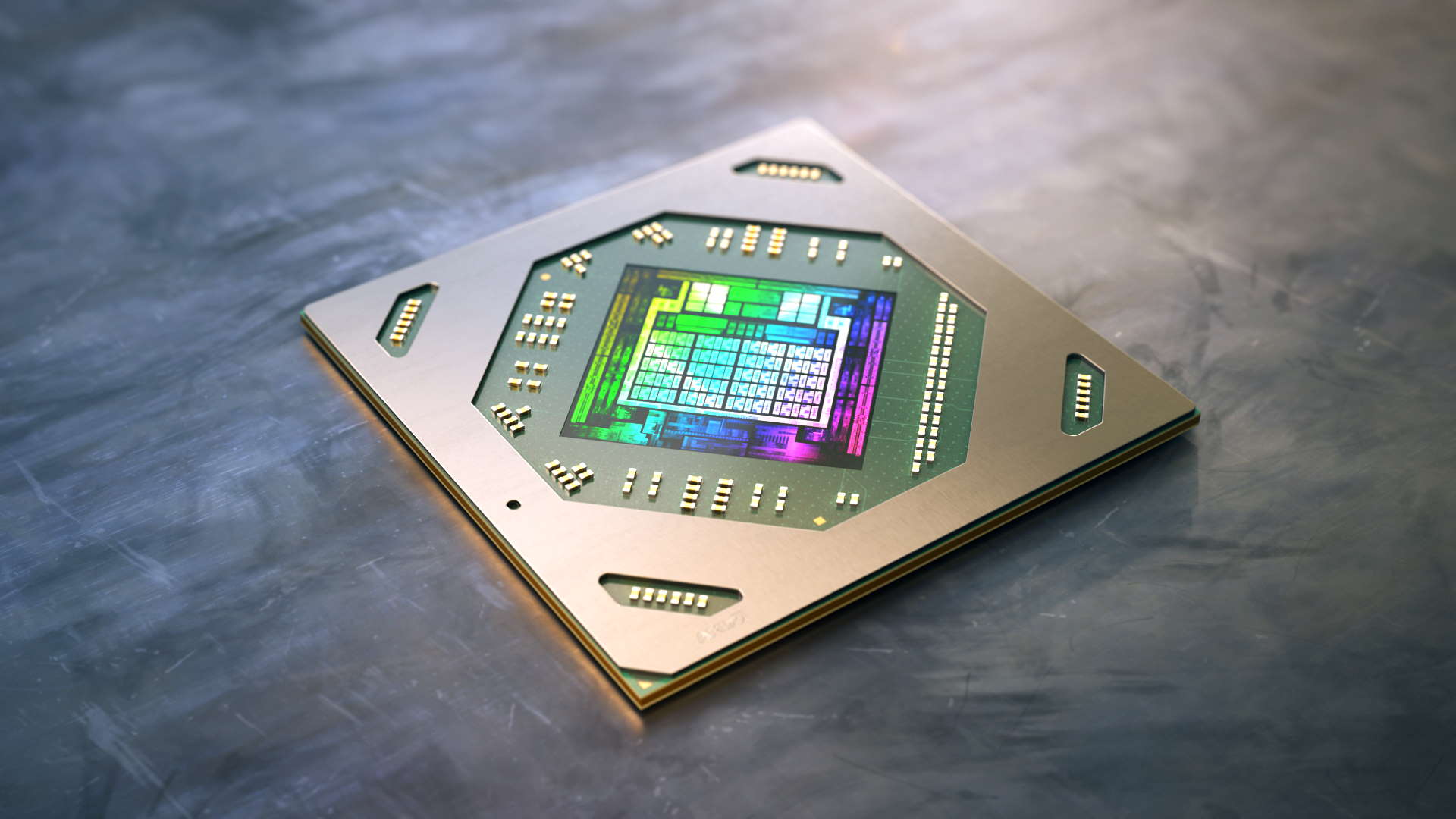Another Radeon Golden Rabbit Edition GPU is on its way but this time it's not an RDNA 3 card
AMD's warehouses must be like the closing scenes to Raiders of the Lost Ark.

After some earlier rumour-mongering, confirmation has finally been given by Gigabyte that it is to release a new Radeon RX 6750 card, specifically a GRE edition. This will be exclusive to China but this doesn't mean you won't be able to pick one up, potentially in a pre-built system as with the RX 7900 GRE, if you're looking for something a bit different.
It's only been a few years since the world was battling with a pandemic but it feels so much longer ago. But one aspect of how everything and everyone changed during that time, that still impacts things today, was the rampant increase in cryptomining. From individuals in their bedrooms to large organisations, people were snapping up graphics cards in the thousands to turn them into vast number-crunching systems, all in the hope of making a pretty penny off the cryptocurrency market.
Such was the demand for GPUs that enormous orders were placed with TSMC and Samsung, the respective manufacturers of AMD's RNDA 2 and Nvidia's Ampere chips. The problem is that you can't just order a few thousand processors and have them all ready by the end of the week. It takes at least a month to fabricate a decent amount of chips and, back then, those manufacturers were struggling to keep up with the overwhelming demand.
Once the pandemic receded and the cryptomarket slumped, AMD and Nvidia were left with inventories overflowing with unsold GPUs. This is partly why you're still seeing endless Radeon RX 6000-series and GeForce RTX 30-series graphics cards on retailer's shelves today. RDNA 2 chips were especially popular with cryptominers because they used less power than Ampere GPUs and the cards that used them also sported lots of VRAM.
So what has all of this got to do with Gigabyte's latest announcement? As spotted by Videocardz, the computing giant has decided to launch a new product just for China and it's some kind of a Radeon RX 6750. Details are pretty thin on the ground, though, to the point that all we really know is that it will come with 12GB of RAM, just like the RX 6700 XT and RX 6750 XT, but like fewer cores as with the RX 6700.
As to the exact number of Compute Units (CUs) and clock speeds, well your guess is as good as anyone's right now. The RX 6750 XT uses a full-fat Navi 22 GPU, which has 40 CUs or 2,560 shaders if you prefer, with a boost clock of 2,600MHz. With 96MB of L3 Infinity Cache, a 192-bit memory bus, and 12GB of GDDR6 running at 18 Gbps, it's a great 1440p gaming graphics card (check out our RX 6750 XT review of one here), though there are better alternatives these days.
More likely it will follow the cut-down, 36 CU / 2,304 shader form of the RX 6700 card so as not to trample on the two XT cards already out in the market, and still widely available.
Keep up to date with the most important stories and the best deals, as picked by the PC Gamer team.

Best CPU for gaming: The top chips from Intel and AMD.
Best gaming motherboard: The right boards.
Best graphics card: Your perfect pixel-pusher awaits.
Best SSD for gaming: Get into the game ahead of the rest.
I am assuming, of course, that Gigabyte is using a Navi 22 in the 6750 GRE. In theory, it could be a Navi 21 (as used in the RX 6800 and 6900) scraped from the bottom of the chip bins. That GPU has way more CUs but if a good number aren't functioning, then it could always be repurposed in a lower-tier product.
Talk of an RX 6750 GRE appearing has been churning around the Interwebs for a while, so this confirmation isn't exactly out of the blue. It does make me wonder just how many RDNA 2 chips are still lying around waiting to be used in some shape or form, though. 2023 is the year of the rabbit, in the Chinese zodiac, so we might see some Golden Dragon Edition cards next year.
I kind of miss the old days of GPUs sporting ridiculous stickers of frogs or robots, so a ruddy big dragon plastered all over the box and heatsink shroud would look awesome.

Nick, gaming, and computers all first met in 1981, with the love affair starting on a Sinclair ZX81 in kit form and a book on ZX Basic. He ended up becoming a physics and IT teacher, but by the late 1990s decided it was time to cut his teeth writing for a long defunct UK tech site. He went on to do the same at Madonion, helping to write the help files for 3DMark and PCMark. After a short stint working at Beyond3D.com, Nick joined Futuremark (MadOnion rebranded) full-time, as editor-in-chief for its gaming and hardware section, YouGamers. After the site shutdown, he became an engineering and computing lecturer for many years, but missed the writing bug. Cue four years at TechSpot.com and over 100 long articles on anything and everything. He freely admits to being far too obsessed with GPUs and open world grindy RPGs, but who isn't these days?

